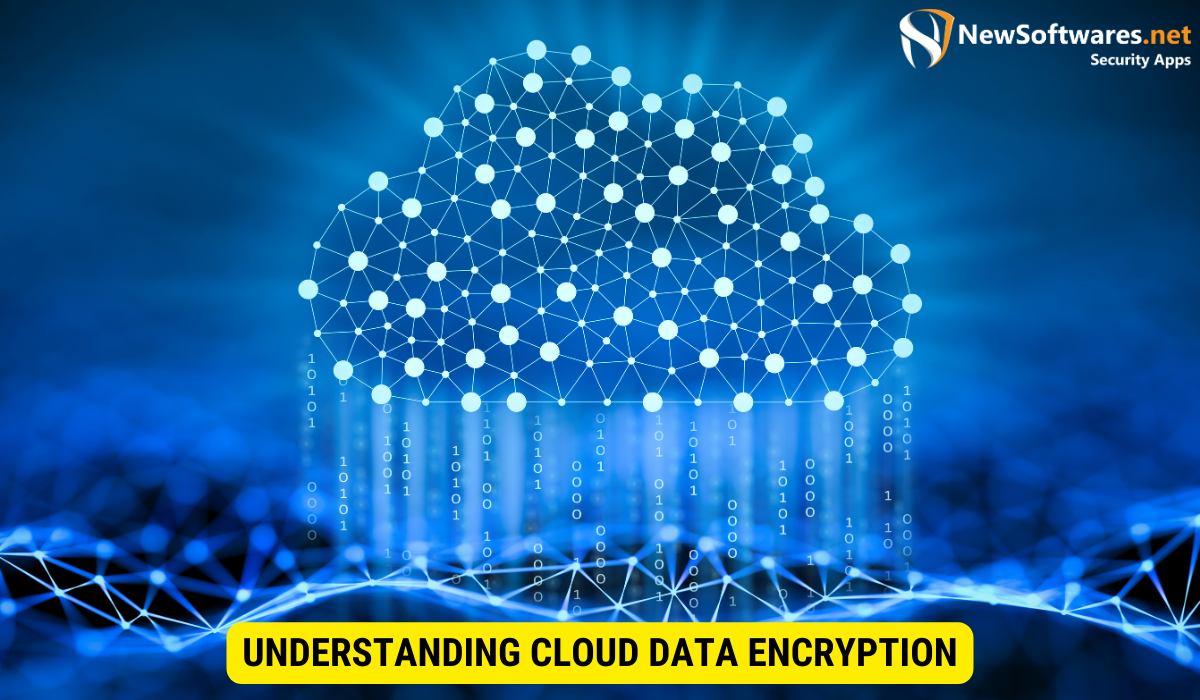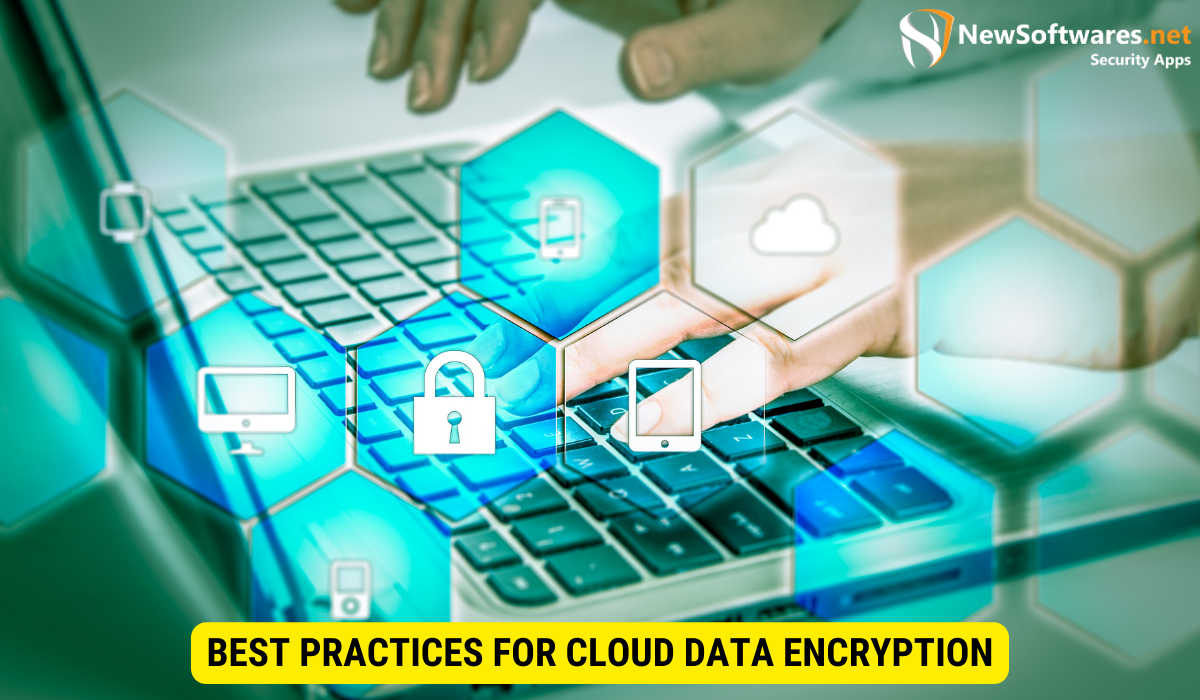Cloud data encryption is the process of encoding data stored in the cloud to protect it from unauthorized access, ensuring data privacy and security.
Data security has become a top priority for businesses and individuals in today’s digital age. With the increasing reliance on cloud storage and services, it is crucial to understand how to encrypt cloud data effectively. Together, we will explore the importance of cloud data encryption, the different types of encryption methods, the steps to encrypt cloud data, and best practices to ensure its security.
Understanding Cloud Data Encryption

What is Cloud Data Encryption?
Cloud data encryption is the process of encoding data stored in the cloud to protect it from illegal access. It ensures that even if the data is intercepted or hacked, it remains unreadable without the decryption key. Encryption algorithms convert the original data into ciphertext, making it virtually impossible for a person without the key to understand the content.
There are two main types of cloud data encryption: client-side encryption & server side encryption. Client-side encryption involves encrypting data on the user device before it is uploaded to the cloud. This means the data is already encrypted before reaching the cloud service provider’s servers. On the other hand, server-side encryption involves the cloud service provider encrypting the data once it is uploaded to their servers.
Both client-side and server-side encryption have their advantages and considerations. Client-side encryption gives users full control over their encryption keys, ensuring they only have access to their data. However, it also means that the data cannot be recovered if the encryption key is lost. Server-side encryption, on the other hand, offers convenience as the cloud service provider manages the encoding process. However, users must trust the provider to secure their encryption keys properly.
Importance of Encrypting Cloud Data
Encrypting cloud data provides an added layer of security and safeguards sensitive information from unauthorized users. It is especially crucial when storing personal identifying information, financial data, or confidential material in the cloud. Encrypting the data, even if the cloud service provider’s security measures are compromised, the data remains protected.
Moreover, data breaches have become increasingly frequent, with cybercriminals continuously finding new ways to exploit vulnerabilities. Encrypting cloud data minimizes the risk of unauthorized access and maintains the privacy and integrity of the information.
One of the key benefits of cloud data encryption is that it helps organizations comply with various data protection regulations. For example, the General Data Protection Regulation (GDPR) requires organizations to implement appropriate security measures to protect personal data. Encrypting data stored in the cloud is considered a best practice for complying with these regulations.
Furthermore, cloud data encryption can also enhance data governance and control. Organizations can define access controls and encryption policies to ensure that only official individuals can access and decrypt the data. This allows organizations to control their data even when it is stored in the cloud.
Another advantage of encrypting cloud data is that it can help build trust with customers & clients. Organizations can demonstrate their commitment to protecting sensitive information by implementing robust encryption measures. This can enhance their reputation and give customers peace of mind knowing their data is secure.
In conclusion, cloud data encryption is critical to data security in the digital age. It provides additional protection against unauthorized access and helps organizations comply with data protection regulations. By encoding data stored in the cloud, organizations should safeguard sensitive information, enhance data governance, and build customer trust.
Types of Cloud Data Encryption
Data encryption is a very important aspect of securing information in the cloud. Several types of encryption methods are available, each with its advantages and considerations. Together, we will explore three common types of cloud data encryption: symmetric encryption, asymmetric encryption, and homomorphic encryption.
Symmetric Encryption
Symmetric encryption, also recognized as secret key encryption, is widely used in cloud data security. It involves using a single key for encrypting and decrypting data. The same key is shared between the sender and the recipient, making it faster and more efficient.
However, one of the challenges of symmetric encryption lies in securely sharing the key between the parties involved. If the key is intercepted or compromised during transmission, it could breach sensitive information. To address this concern, various key exchange protocols and algorithms have been developed to ensure secure key distribution.
Despite the potential risks associated with key sharing, symmetric encryption remains popular due to its speed and efficiency. It is particularly suitable for scenarios where large amounts of data must be encrypted and decrypted quickly.
Asymmetric Encryption
Asymmetric encryption, also called public-key encryption, is another widely used method in cloud data security. It involves using a pair of keys, for example, a public key and a private key. The public key is encrypted, while the private key is kept secret and used for decryption.
This method eliminates the need to share a single key, enhancing security. Even if the public key is intercepted, it cannot be used to decode the encrypted data without the corresponding private key. As a result, asymmetric encryption offers a higher level of security compared to symmetric encryption.
However, asymmetric encryption is slower and computationally more expensive than symmetric encryption. Encryption and encryption involve complex mathematical operations, which can impact performance, especially when dealing with large volumes of data.
Homomorphic Encryption
Homomorphic encryption is an advanced method that allows computations on encrypted data without decryption. This type of encryption is highly complex and offers significant privacy benefits, especially when performing analysis or computations on sensitive data stored in the cloud.
With homomorphic encryption, data can be securely processed and analyzed while remaining encrypted. This eliminates the need to decrypt the data, reducing the danger of exposing sensitive information during computation. It enables organizations to leverage the power of cloud computing while maintaining the confidentiality of their data.
However, homomorphic encryption is still an emerging technology with challenges. It requires specialized algorithms and significant computational resources, making it slower and more resource-intensive than other encryption methods. Additionally, implementing and managing homomorphic encryption systems can be complex and requires expertise in cryptography.
In conclusion, the choice of encryption method for cloud data security depends on various factors, including the sensitivity of the data, performance requirements, and the level of security desired. Symmetric encryption offers speed and efficiency, while asymmetric encryption provides enhanced security. Homomorphic encryption, although complex, enables secure computation on encrypted data. Understanding the strengths and limitations of each encryption method is crucial for organizations to make informed decisions and protect their data in the cloud.
Steps to Encrypt Cloud Data
Choosing the Right Encryption Method
The first step in encrypting cloud data is selecting the appropriate encryption method based on your specific requirements. Consider factors such as the level of security needed, the type of data being protected, and the resources available for encryption and decryption.
Implementing the Encryption Process
Once the encryption method is determined, the next step is to implement the encryption process. This involves applying the chosen encryption algorithm to the data before storing it in the cloud. Following best practices and using robust encryption algorithms widely recognized and accepted in the industry is essential.
Verifying the Encryption
After encrypting the data, verifying that the encryption has been successfully applied is crucial. This involves decrypting a small portion of the data to confirm its integrity and ensure the decryption process works as expected.
Best Practices for Cloud Data Encryption

Regularly Updating Encryption Algorithms
As technology evolves, so do encryption algorithms. It is essential to stay updated with the latest advancements in encryption methods and regularly review the algorithms being used. This helps ensure that the encryption remains strong and resistant to emerging threats.
Using Strong Passwords and Two-Factor Authentication
Passwords play a significant role in data security. Using strong, complex passwords that are hard to guess is crucial. Additionally, enabling two-factor authentication adds extra layer of protection by requiring a second verification form, for instance a unique code sent to a mobile device.
Ensuring Compliance with Data Protection Regulations
Depending on the nature of your business and the type of data being stored in the cloud, there may be specific data protection regulations that you need to comply with. Understanding and adhering to the policy is essential to ensure data privacy and avoid penalties.
Key Takeaways
- Cloud data encryption protects sensitive information from unauthorized access.
- There are different types of encryption methods, including symmetric, asymmetric, and homomorphic.
- The steps to encrypt cloud data involve choosing the right encryption method, implementing the encryption process, and verifying its effectiveness.
- Following best practices, such as regularly updating encryption algorithms and strong passwords, enhances data security.
- Compliance with data protection regulations is essential to maintain data isolation and avoid legal consequences.
FAQs
Is cloud data encryption necessary?
Cloud data encryption is necessary to protect sensitive information from unauthorized access and maintain data privacy.
Which encryption method is the most secure?
While all encryption methods have strengths and weaknesses, a widely accepted encryption algorithm, such as AES (Advanced Encryption Standard), is considered highly secure.
Can encrypted cloud data be decrypted?
Encrypted cloud data can be decrypted by using the correct decryption key. Without the decryption key, the data remains unreadable.
What happens if I lose the decryption key?
If you lose the decryption key, retrieving the encrypted data can be challenging or even impossible. It is critical to securely store and manage decryption keys.
Is cloud data encryption sufficient for complete data security?
While cloud data encryption is an essential security measure, it is not the only aspect to consider. It should be implemented next to other security measures, for example access controls and regular security audits.
Conclusion
Encrypting cloud data is crucial in today’s digital landscape to protect sensitive information from unauthorized access and maintain data privacy. Businesses and individuals can significantly enhance their data security by understanding the different types of encryption methods and following best practices. Regularly updating encryption algorithms, using strong passwords and two-factor authentication, and ensuring compliance with data protection regulations are essential to safeguarding cloud data. By prioritizing data encryption, you can have peace of mind knowing that your important information remains secure even in the cloud.
